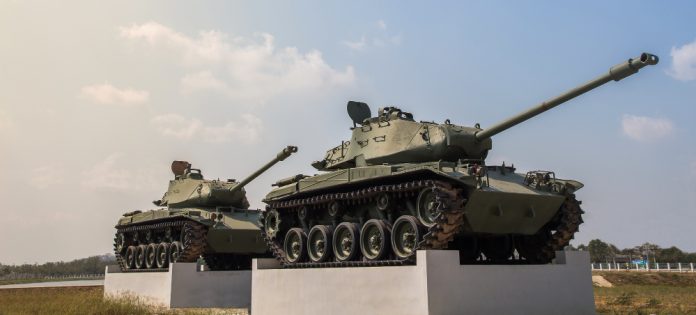- As you are aware, the budgetary provisions of several countries – irrespective of their status as developed, underdeveloped, or developing – will find the major chunk reserved for defence preparedness. Apart from the targeted acquisitions of arms, ammunition, and other related military hardware, the government must also contend with the huge salary and pension bills too. Look not far from our economically stressed and struggling neighbor Pakistan whose defence budget far exceeds the need to provide succour to the common citizens. Even though the country is looking at bankruptcy, the defence allocations will invariably stay clear of any compromises.

PC: Freepik
- And mind you, the ecosystem to develop a defence industry is exorbitantly expensive. Against this backdrop, the Indian establishment aspiring to drastically enhance its defence production capabilities and in turn, export the munitions to other countries appears greatly ambitious. We know how the Indian military is heavily dependent on Russian munitions which comprise almost 70% including the air force fighters. Despite grandiose announcements, India is struggling to indigenously produce military hardware locally. We know how the light combat aircraft (LCA) is yet to fully see the day of light even after a couple of decades.
- Did someone mention our technologists, scientists, and researchers should be encouraged and also bring in huge investments in the defence industry? Obviously. Note that AeroINdia 2023 which kicked off recently is not just being promoted as the biggest exhibition of India’s air power but also a significant platform to push Indian defence manufacturing to the next level. A series of strategic meetings on the sidelines of the event will aim at boosting GOI’s efforts towards self-reliance, a joint production of advanced technologies, and increasing defence exports. These have immediate implications for India’s strategic security.

PC: Freepik
- Given the changing nature of warfare, the integration of air power with other arms of the military has become crucial. Asia is largely a seascape. So India’s ability to protect its interests and project strategic depth will largely depend on the integration of naval and air assets. The recent test landing of the naval variant of the Light Combat Aircraft (LCA) on board INS Vikrant is a good example. As for defence exports, they stood at a record Rs 14,000 crore in 2021-22, up from just Rs 1,520 crore in 2017. But there is significant headroom for growth and PM Modi has announced a hugely ambitious target of $5 billion in annual exports by 2024-25. There are two issues here.
- First, India’s defence exports have largely comprised low-to-medium-tech items like personal protective equipment, offshore patrol vessels, spares for radars, coastal surveillance systems, helicopters, and electronic and engineering parts. Agreed, we are also exporting the BrahMos missile to the Philippines, but a few other high-tech items are on the order list. Second, exports are further held back by advanced platforms like LCA being produced at a very slow pace, with even domestic orders yet to be satisfied, as mentioned above. The way ahead is to boost exports by quicker production timelines and most importantly, involve different arms of the defence industry – private and government – to work together to make this happen. Unless this fructifies, our goal to become a major defence exporting nation would remain on paper.






